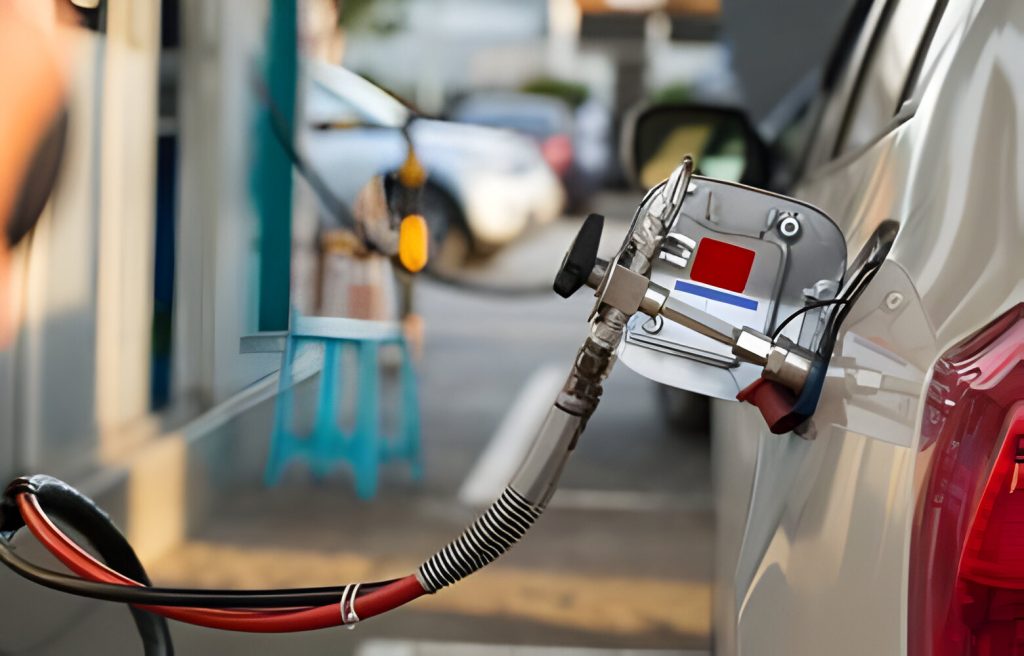CNG Practice Test 2025

Welcome to our comprehensive guide on conducting a CNG test 2025 to ensure optimal safety and compliance with regulations. If you’re working with Compressed Natural Gas (CNG), it’s crucial to prioritize safety and conduct regular tests to maintain the integrity of your systems. In this guide, we will walk you through the key steps and considerations for conducting a successful CNG test.
Compressed Natural Gas (CNG) is a sustainable fuel option that has gained significant traction in recent years. Not only does it offer a cleaner and greener alternative to traditional fossil fuels, but it also brings economic benefits by reducing dependence on imported oil. By understanding the basics of CNG and its advantages, you’ll have a better grasp of why conducting a CNG test is essential for ensuring a sustainable and efficient fuel source.
Free CNG Practice Test Online
Understanding CNG: A Sustainable Fuel Option
Before we delve into the details of a CNG test, it’s important to understand the basics of Compressed Natural Gas (CNG). CNG is a sustainable fuel option that has gained recognition for its numerous environmental and economic benefits.
CNG is primarily composed of methane gas, extracted from natural gas reserves deep within the Earth’s crust. It is compressed to a high pressure and stored in specialized tanks for use in a variety of applications, including transportation, heating, and power generation. Unlike conventional fossil fuels, such as gasoline or diesel, CNG is considered a cleaner alternative due to its lower carbon content and reduced emissions.
One of the major advantages of CNG as a sustainable fuel option is its positive impact on air quality. When compared to traditional fuels, CNG combustion emits substantially fewer greenhouse gases, nitrogen oxides, and particulate matter. This significant reduction in harmful emissions makes CNG an attractive choice for combating air pollution in urban areas.
Another key advantage of CNG is its abundance and accessibility. Natural gas reserves are ample, ensuring a reliable supply of CNG for the foreseeable future. Additionally, CNG can be produced domestically, reducing dependency on imported energy sources and improving energy security.
Preparing for a CNG Test: Safety Precautions
When it comes to conducting a CNG test, safety should always be your top priority. Compressed Natural Gas (CNG) is a powerful fuel that requires precautionary measures to ensure a secure testing environment. By implementing the right safety precautions, you can minimize risks and protect both yourself and your team.
Understanding the Risks
Before proceeding with the CNG test, it is crucial to have a thorough understanding of the potential risks associated with working with this fuel. CNG is highly flammable and can lead to fire or explosions if mishandled.
“Compressed natural gas is a safe and reliable fuel when handled properly. However, it is important to follow the necessary safety precautions to prevent accidents.”
Safety Preparations
Prior to conducting a CNG test, you must prepare the testing area according to safety guidelines. This includes:
- Ensuring proper ventilation to prevent the accumulation of gas fumes
- Clearing the area of any flammable materials
- Wearing appropriate personal protective equipment, such as safety goggles and gloves
- Having a well-equipped fire extinguisher nearby

Safe Handling Procedures
During the CNG test, it is essential to follow safe handling procedures to mitigate potential hazards. These include:
- Being cautious while connecting and disconnecting CNG components to avoid leaks
- Thoroughly inspecting all equipment for any signs of damage or wear
- Performing leak tests using a suitable solution to detect any gas leaks
- Regularly monitoring gas pressure to ensure it remains within the safe limits
By adhering to these safety precautions and procedures, you can minimize the risk of accidents and create a secure testing environment. Remember, safety should never be compromised when working with CNG.
Conducting a CNG Test: Step-by-Step Process
Now that you are well-prepared, let’s dive into the step-by-step process of conducting a CNG test. Ensuring safety and accuracy throughout the test is essential for optimal performance and compliance.
Step 1: Pre-Test Inspection
Before commencing the CNG test, conduct a thorough inspection of the system. Check for any visible damage, leaks, or loose connections. This will help identify any potential issues that need to be addressed before proceeding further.
Step 2: Leak Detection
An important step in the CNG test is checking for leaks. Use a high-quality leak detection solution to identify any leaks in the system. Pay close attention to fittings, valves, and hoses. Fix any leaks found before proceeding to the next step.
Step 3: Pressure Test
Perform a pressure test to ensure the system can withstand the required pressure levels. Start by shutting off the CNG supply valve and releasing any remaining pressure from the system. Then, charge the system with the recommended pressure and monitor for any pressure drops over a specified period. If the pressure remains steady, the system passes the pressure test.
Step 4: Functional Test
The functional test verifies the proper functioning of various components in the CNG system. This includes checking the pressure regulator, fuel injectors, and control solenoids. Follow the manufacturer’s guidelines and perform the specified tests to ensure everything is in working order.
Step 5: Emission Test
In the emission test, measure and analyze the exhaust emissions from the vehicle. Use a reliable emissions testing equipment to determine if the CNG system complies with the environmental standards.
Step 6: Documentation
Lastly, don’t forget to document all the test results and any necessary adjustments or repairs performed during the test. This documentation is crucial for compliance purposes and can serve as a reference for future inspections or audits.
By following this step-by-step process, you can ensure a thorough and accurate CNG test, promoting safety and compliance for your CNG system.
Compliance Checks: Meeting Regulatory Standards
When it comes to operating CNG systems, compliance with regulatory standards is of utmost importance. Ensuring that your CNG systems meet the required standards is essential for both safety and legality. Conducting regular compliance checks can help identify any potential issues and ensure that your systems are operating within the guidelines set by regulatory authorities.
The Importance of Compliance Checks
Compliance checks play a vital role in maintaining the safety and integrity of CNG systems. These checks help identify any non-compliance issues before they turn into major problems. By regularly assessing your systems, you can proactively address any concerns and make the necessary adjustments to meet the regulatory standards.
Regulatory standards are put in place to protect individuals, property, and the environment. Compliance checks help ensure that your CNG systems are operating in a safe and environmentally responsible manner, minimizing the risk of accidents and ensuring that you’re doing your part to sustain a greener future.

What to Include in Compliance Checks
Compliance checks for CNG systems typically involve inspections and certifications to verify adherence to specific standards. These checks may include:
- Pressure tests to ensure the integrity of the CNG cylinders and fuel lines
- Leak detection to identify any potential gas leaks
- Proper installation and positioning of safety devices, such as pressure relief devices and emergency shut-off valves
- Verification of proper labeling and documentation, including accurate pressure rating information and maintenance records
- Inspections of storage facilities and fueling stations to ensure compliance with safety regulations
By conducting these compliance checks on a regular basis, you demonstrate your commitment to maintaining a safe and compliant CNG system.
“Compliance checks help ensure that your CNG systems are operating in a safe and environmentally responsible manner, minimizing the risk of accidents and ensuring that you’re doing your part to sustain a greener future.”
Consequences of Non-Compliance
Non-compliance with regulatory standards can have severe consequences, ranging from fines and penalties to potential shut down of operations. Failure to meet compliance requirements not only puts your organization at risk but also jeopardizes the safety of individuals and the environment. By prioritizing compliance checks, you demonstrate your commitment to upholding the highest safety and regulatory standards.
| Benefits of Compliance Checks | Consequences of Non-Compliance |
|---|---|
|
|
Conclusion
In conclusion, mastering the essentials of a CNG test is crucial for both safety and compliance with regulations. By following the steps and guidelines provided in this guide, you can confidently perform CNG tests while ensuring optimal safety and compliance. Remember to prioritize safety by implementing the necessary precautions and preparations before conducting a CNG test.
A thorough understanding of CNG as a sustainable fuel option can further enhance your knowledge and commitment to promoting environmentally friendly solutions. With its benefits for the environment and economy, CNG is becoming an increasingly popular choice for transportation.
Lastly, don’t overlook the importance of compliance checks and meeting regulatory standards. Regular inspections and certifications will help ensure that your CNG systems are in line with the required guidelines.
By staying informed and proactive in your approach to CNG testing, you can contribute to a safer and greener future.
FAQ
What is a CNG test?
A CNG test is a process of inspecting and evaluating Compressed Natural Gas systems to ensure they meet safety and regulatory standards.
Why is a CNG test important?
A CNG test is important to ensure the safety of CNG systems and compliance with regulations, minimizing the risk of accidents or failures.
Who should perform a CNG test?
CNG tests should be conducted by qualified technicians or professionals with knowledge and experience in CNG systems and safety procedures.
How often should a CNG test be conducted?
The frequency of CNG tests may vary depending on factors such as local regulations and usage, but it is generally recommended to conduct tests at least annually.